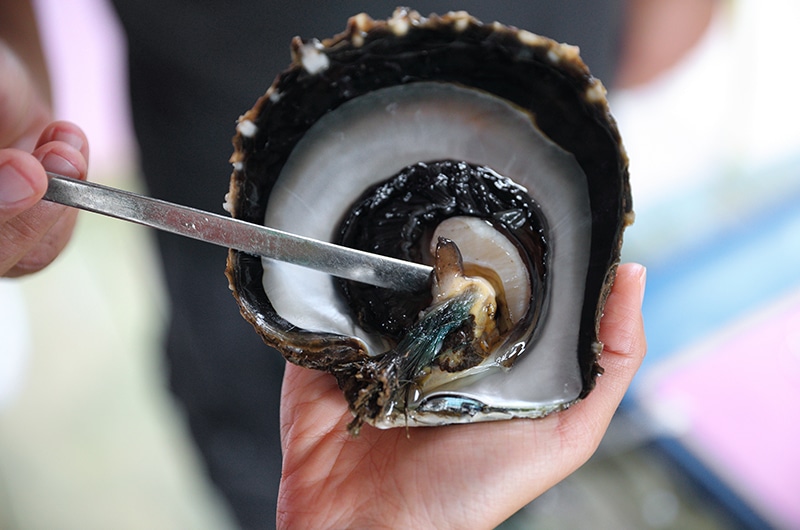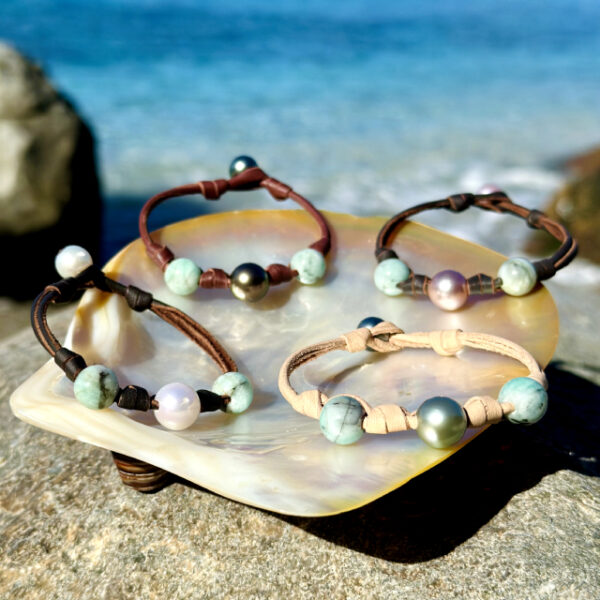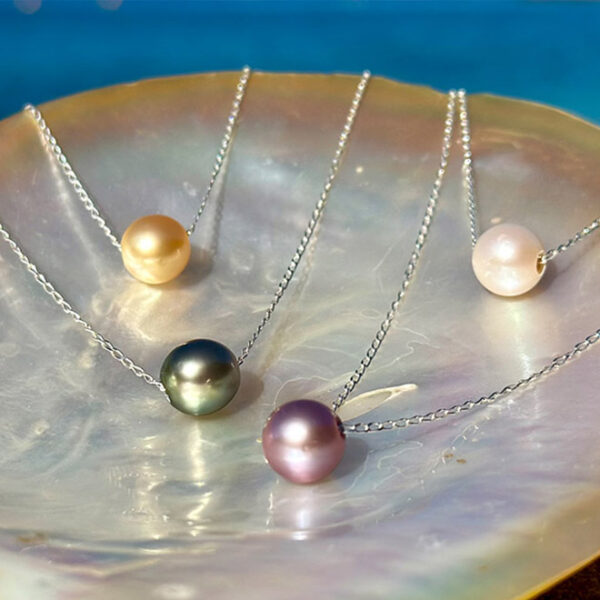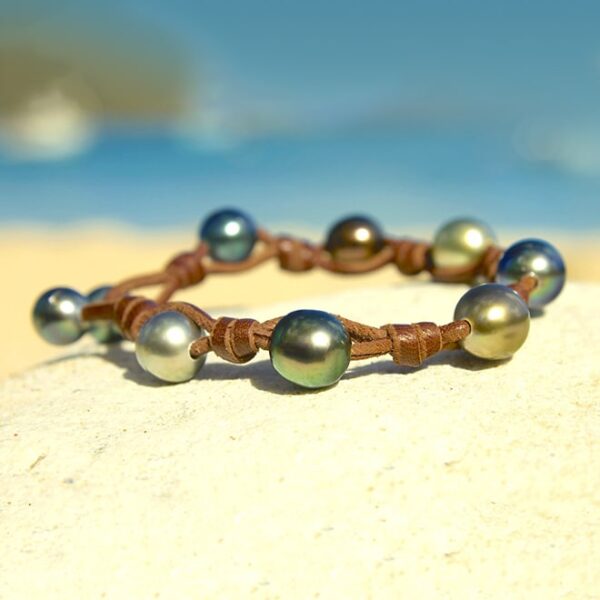You've added...
Tahitian pearl
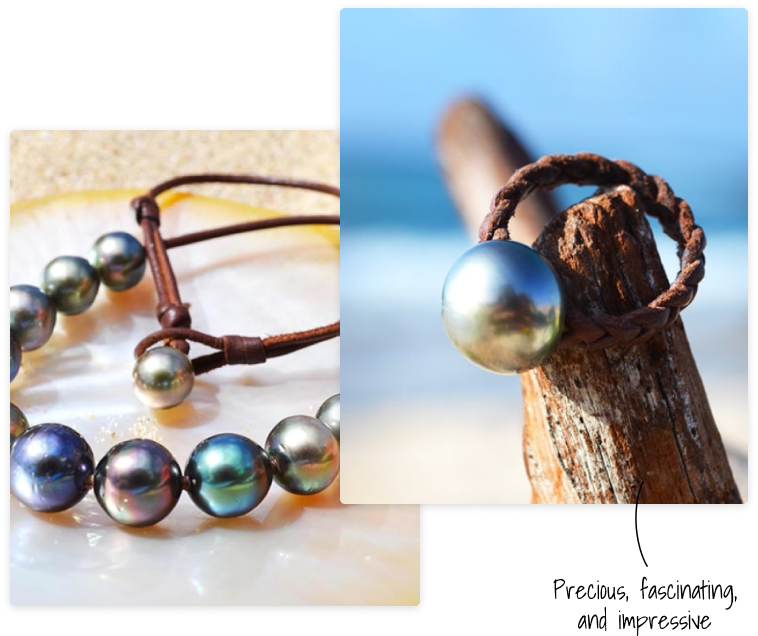
What is a Tahitian Pearl?
The Tahitian pearl is classified as a gemstone. The designation as a gemstone, once reserved for precious stones, underscores the beauty of this pearl. The Tahitian pearl is produced by a type of bivalve mollusk: the Pinctada margaritifera pearl oyster. While most pearls are white, gray, or light-colored, the Tahitian pearl is unique with its black color. But what is the origin of this color?
The color shades of the Tahitian pearl range from black to gray, with various overtones such as green, blue, peacock, eggplant, copper, and bronze. Black is therefore the base color of the pearls found in the Polynesian lagoons.
It is important to note that the color of a pearl depends primarily on the nature of the mollusk that produced it. The pearls from Polynesian lagoons are primarily found in the Tuamotu Archipelago, the largest archipelago in Polynesia (76 atolls, including the well-known Rangiroa and Fakarava), as well as in the Gambier Islands, where the pearl farms of Mr. Robert Wan, the “Emperor of Tahitian Pearls,” are located.
They are also found in the Society Archipelago, which includes the islands of Tahiti with its capital, Papeete; Moorea, which has a bay named after the famous navigator James Cook; Bora Bora, celebrated for its postcard-perfect landscapes; as well as Raiatea and Huahine, among the better-known islands. Additionally, golden pearls are produced by pearl oysters in Australia (Pinctada maxima), and white pearls are produced by other varieties in several regions worldwide. Tahitian pearls, known as “Black Pearls,” are thus the product of mollusks with very dark, thick nacre.
Read more
Characteristics of Tahitian Pearls
Color of Black Pearls
The lagoon pearl, also known as the Tahitian pearl or Polynesian pearl, is characterized by three color components:
- Hue: The most dominant color, which can range from deep black to gray.
- Luster: This is the degree of brightness, resulting from the interaction between the pearl’s surface and light.
- Saturation: The intensity of the color (purity, vibrancy).
The Tahitian pearl is available in various hues and a wide palette of dark colors. The hue mainly depends on the color of the implant and the quality of the water in its natural or cultured environment.
Size of Polynesian Pearls
The size of a Polynesian lagoon pearl is its diameter, measured in millimeters. Black pearls can range from 8 mm to 16 mm. In some cases, black pearls can reach exceptional diameters (18 mm to 21 mm).
Shape of Tahitian Pearls
Black pearls come in seven basic shapes, grouped into five categories. The shapes include round, semi-round, oval, button-shaped, drop-shaped, baroque, semi-baroque, and circled.
Value of a Tahitian Pearl
The value of a Polynesian pearl depends on several criteria, such as color, size, the number of imperfections, luster brightness, and nacre thickness. A black pearl with no surface imperfections is more valuable than one with visible imperfections. The most important criterion in evaluating the value of a black pearl is the quality of its surface. For this reason, there are five grades or classes: Top Gem, A, B, C, and D quality.
Note that the Top Gem quality is awarded to black pearls with no surface imperfections.
How to Choose Your Tahitian Pearl?
Various beauty criteria determine the value of a Tahitian pearl. The Tahitian pearl is among the most expensive pearls. Choosing your black pearl means finding the best quality/price ratio. This is why Kalinas, a creator of Tahitian pearl jewelry, offers you a collection of unique, custom-made jewelry crafted with passion and expertise.
How to Identify Genuine Black Pearls?
The shine of a black pearl (its luster) is a key feature of real Tahitian pearls. The pearl should reflect light in various ways depending on how you expose it. When examining a black pearl, check if its surface reflects your image. If it does, it is a genuine Tahitian pearl. If you’re uncertain, consider consulting a professional who can identify the physical properties of the pearl through advanced tests (refractometer test, microscope test…).
For genuine Tahitian pearls, there are two types: cultured black pearls and natural pearls. Natural pearls are prohibited from being harvested and sold. The difference lies in the process by which the pearl is created. Finally, just choose the black pearl that best meets your desires and adds a personal touch to your style.
Affordable Black Tahitian Pearls?
